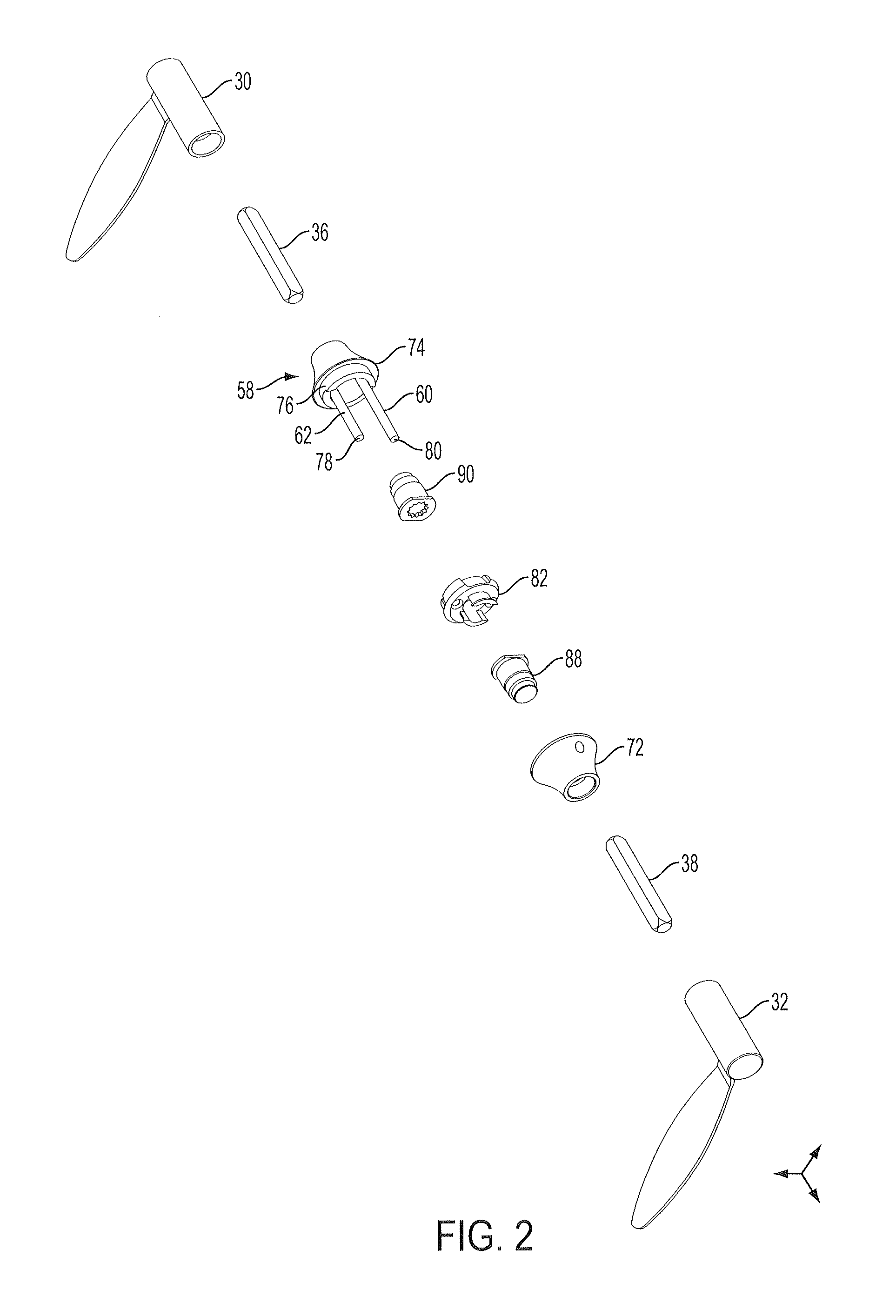Roseless trim for architectural hardware
a technology of architectural hardware and roseless trim, which is applied in the field of architectural hardware, can solve the problems of inability to close the space between bolts, and achieve the effects of reducing the length and width of the curved slo
- Summary
- Abstract
- Description
- Claims
- Application Information
AI Technical Summary
Benefits of technology
Problems solved by technology
Method used
Image
Examples
first embodiment
[0059]The term “through bolt” when used herein refers to structures that extend between opposite faces of a door and use a threaded connection to clamp the door and provide a secure attachment structure extending between the opposed faces of the door. They may include actual bolts with threads at one end and a head at the opposite ends. However, in the mortise lock design, they are similar to studs in that they have an external thread at one end and an internal thread at the other end that receives a screw.
second embodiment
[0060]In the mortise lock design, the through bolts have an enlarged head at one end and an internal thread at the other end. The internal thread receives a screw as in the first mortise lock embodiment. In the tubular lock embodiment, the through bolts are specially shaped arms with two internally threaded openings at the opposite ends that receive screws. The term “through bolt” is used for all of these structures and for other structures that extend between opposite sides of the door and perform the functions that are commonly performed by through bolts in conventional designs.
[0061]The close spacing of the through bolts 60, 62 allows a very small diameter opening in the door to be used for the spindles and through bolts. Accordingly, a conventional rose is not required to surround the area outward from the handle bases 58 and 72. The term “roseless” is used herein when the through bolts are located on a bolt circle that is less than one inch (25.4 mm) in diameter.
[0062]This smal...
PUM
 Login to View More
Login to View More Abstract
Description
Claims
Application Information
 Login to View More
Login to View More - R&D
- Intellectual Property
- Life Sciences
- Materials
- Tech Scout
- Unparalleled Data Quality
- Higher Quality Content
- 60% Fewer Hallucinations
Browse by: Latest US Patents, China's latest patents, Technical Efficacy Thesaurus, Application Domain, Technology Topic, Popular Technical Reports.
© 2025 PatSnap. All rights reserved.Legal|Privacy policy|Modern Slavery Act Transparency Statement|Sitemap|About US| Contact US: help@patsnap.com



